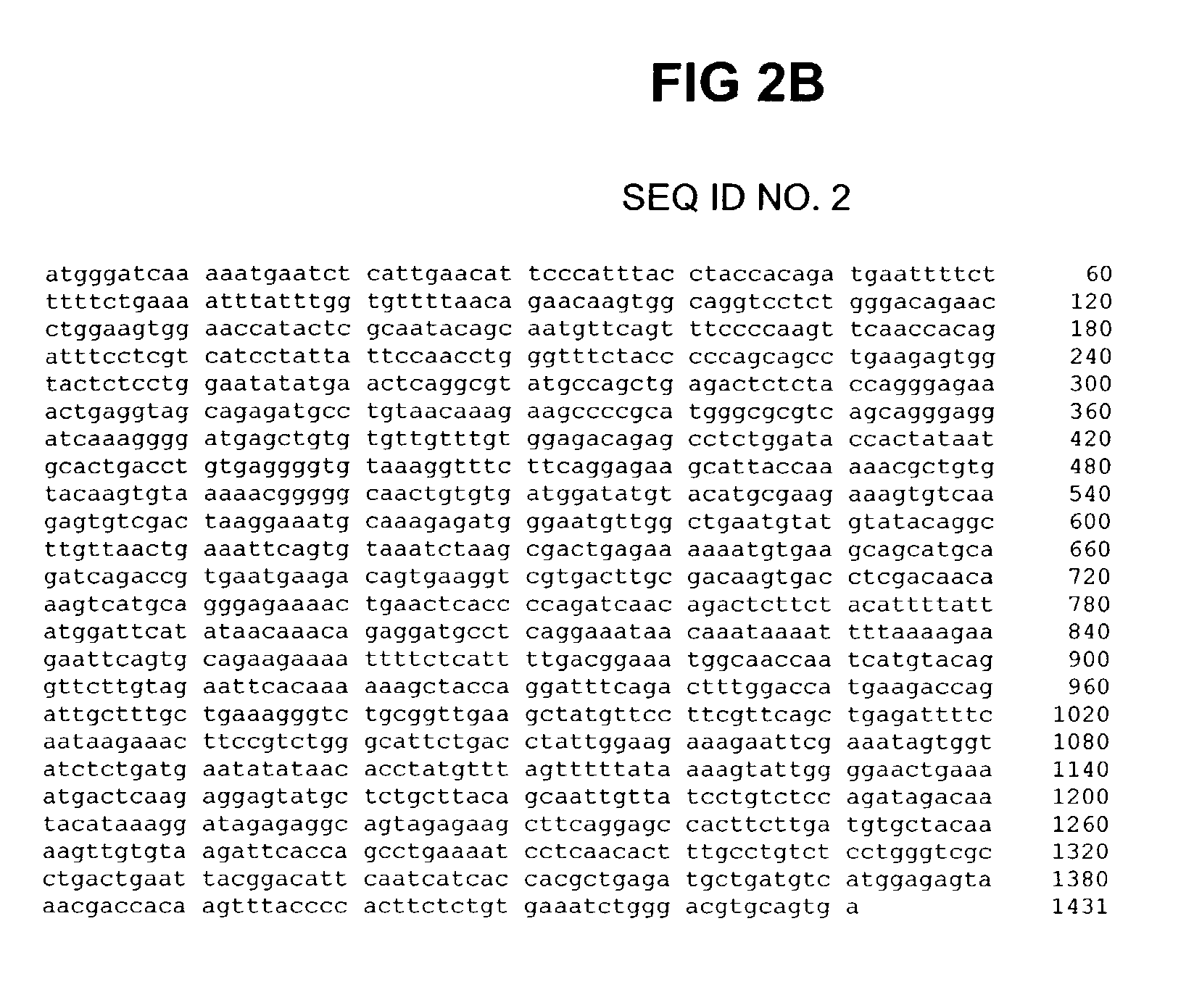NR1H4 nuclear receptor binding compounds
a nuclear receptor and binding compound technology, applied in the field of nr1h4 nuclear receptor binding compounds, can solve the problems of affecting the cellular differentiation, proliferation, reproduction, and transmission of highly complex signals, and achieve the effects of reducing the number of cellular differentiation, proliferation, and reproduction
- Summary
- Abstract
- Description
- Claims
- Application Information
AI Technical Summary
Benefits of technology
Problems solved by technology
Method used
Image
Examples
example 1
In Vitro Screening for Compounds which Influence FXR Binding to Coactivators
[0103]For screening purposes a fragment of the open reading frame of human FXR alpha (NR1H4—(Acc. No:AF384555)) encoding amino acids 187–472 was amplified by standard RT PCR procedures (see FIGS. 2A and 2B; SEQ ID NO. 1 and 2). Starting material was total RNA derived from human liver. The resulting cDNA obtained after reverse transcription was subsequently cloned using the Gateway™ recombination technology (Invitrogen, USA) into the expression plasmid pDest15 (Invitrogen, USA). This construct was used to express a recombinant GST-FXR fusion protein in E.coli (BL21 strain). A pDEST 17 derivative clone harboring an additional sequence encoding amino acids 548–878 of human TIF2 (Acc. No: XM—011633 RefSeq) (see FIGS. 2C and 2D, SEQ ID NO. 3 and 4) was constructed using Gateway™ recombination technology (Invitrogen, USA) in order to obtain a construct which was used to express recombinant His-tagged TIF2 fragment...
example 2
Experimental Procedure for the Preparation of the Compounds According to the Invention
[0108]The following steps describe the experimental procedure for the preparation of the compounds according to the invention. The synthesis scheme is shown in FIG. 1.
Step 1: Synthesis of Dicholorobenzaldehyde Oxime (Compound 3).
[0109]A solution of 2,6-dichlorobenzaldehyde (compound 2) (0.14 mole) in ethanol (200 mL) was added to a solution of hydroxylamine hydrochloride (0.16 mole) and sodium hydroxide (0.16 mole) in water (100 ml). The resulting mixture was stirred at 90° C. for 24 hours. The volume of the reaction mixture was reduced in vacuo by ˜30 mL, which induced a precipitate. The white solids were collected by filtration and washed with water (2×100 mL) to yield (96%) of dicholorobenzaldehyde oxime (compound 3).
Step 2: Synthesis of 3-(2,6-dichlorophenyl)-4-carbomethoxy-5-isopropyl-isoxazole (Compound 5)
[0110]N-chlorosuccinimide (0.07 mole) was added at room temperature to a solution of 2,6...
PUM
| Property | Measurement | Unit |
|---|---|---|
| total volume | aaaaa | aaaaa |
| volume | aaaaa | aaaaa |
| volume | aaaaa | aaaaa |
Abstract
Description
Claims
Application Information
 Login to View More
Login to View More - R&D
- Intellectual Property
- Life Sciences
- Materials
- Tech Scout
- Unparalleled Data Quality
- Higher Quality Content
- 60% Fewer Hallucinations
Browse by: Latest US Patents, China's latest patents, Technical Efficacy Thesaurus, Application Domain, Technology Topic, Popular Technical Reports.
© 2025 PatSnap. All rights reserved.Legal|Privacy policy|Modern Slavery Act Transparency Statement|Sitemap|About US| Contact US: help@patsnap.com



